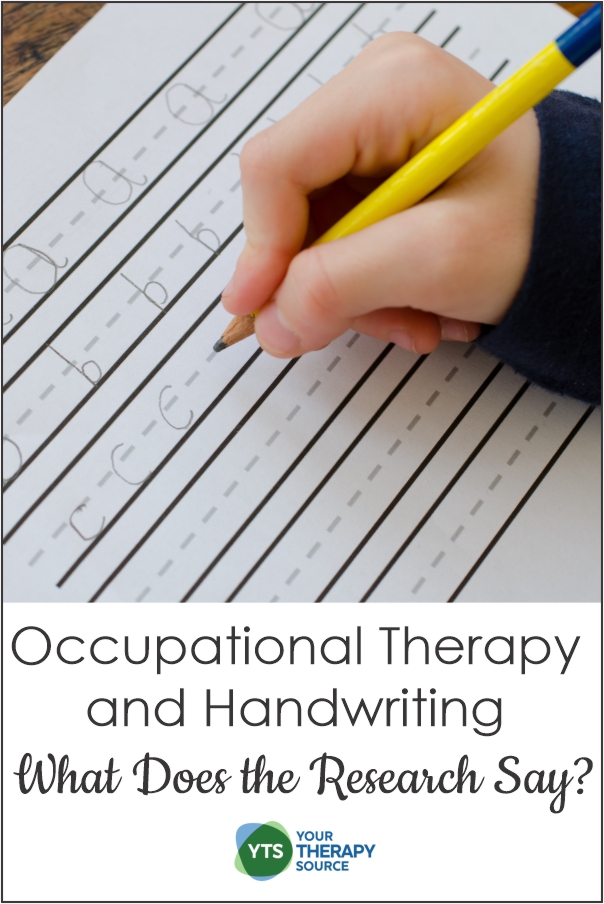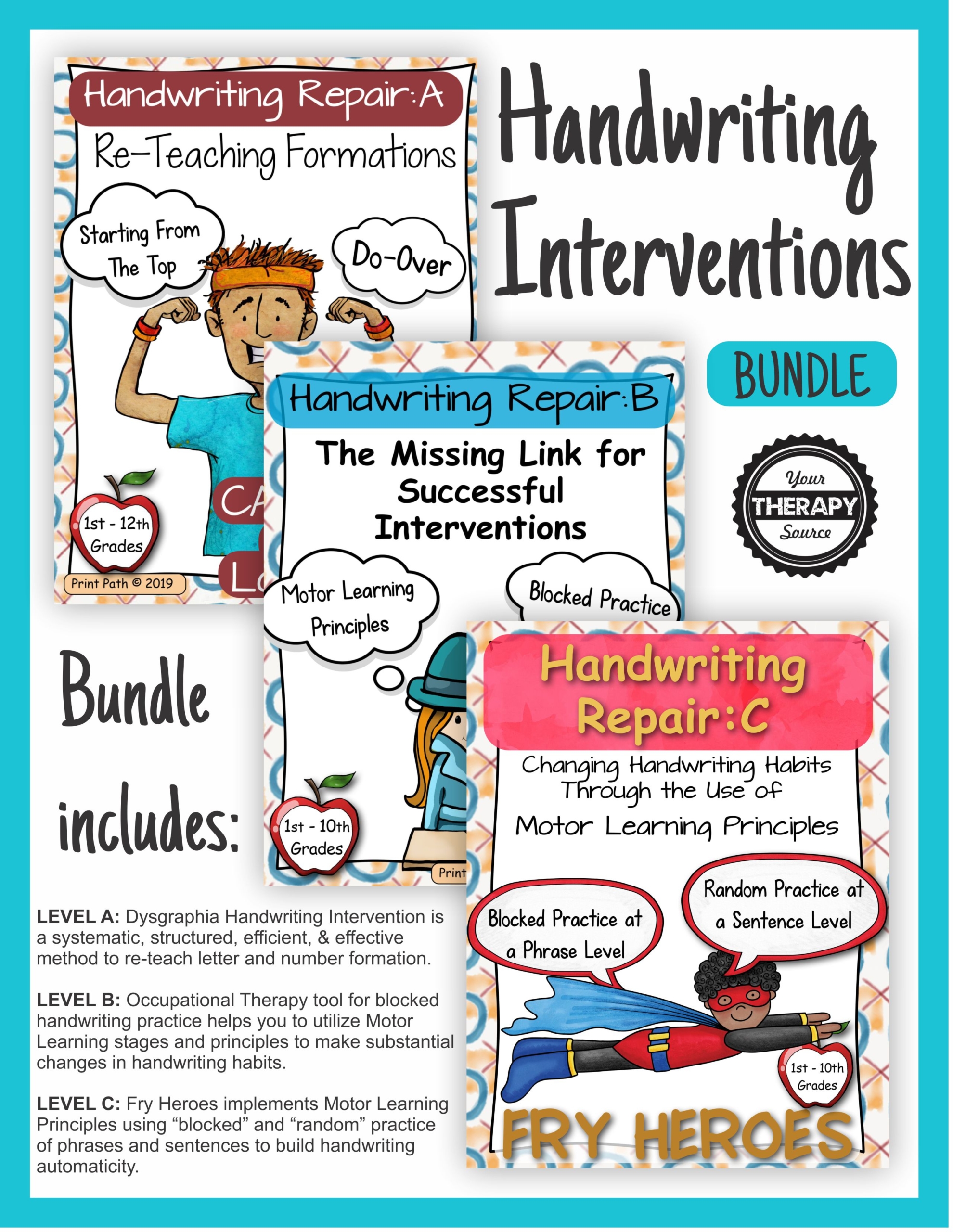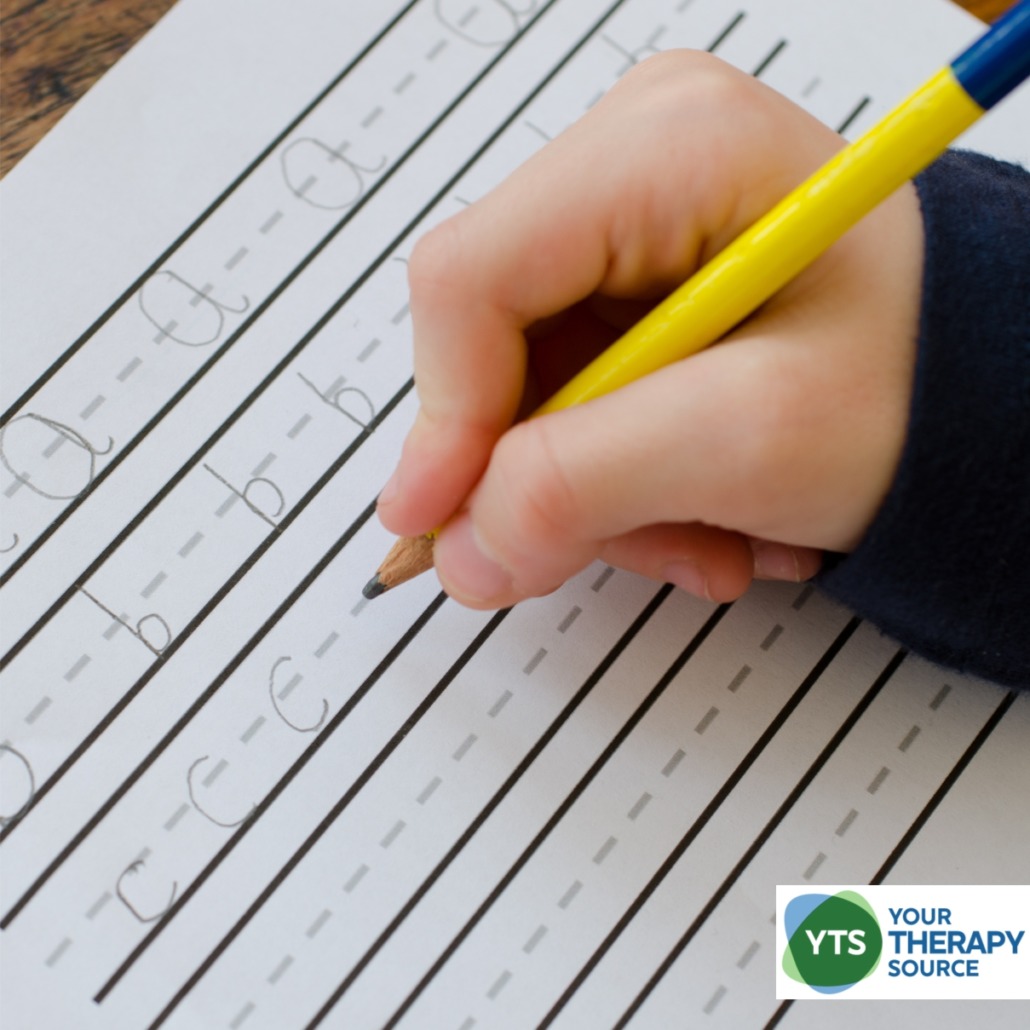Occupational Therapy Handwriting Research

Do you have questions about occupational therapy and handwriting? Perhaps you wonder what the evidence is to support occupational therapy interventions for handwriting. Researchers did a scoping evidence review on handwriting deficits in elementary-aged school children.
WHY ARE CHILDREN REFERRED FOR OCCUPATIONAL THERAPY HANDWRITING HELP?
Many children struggle with poor handwriting, and this can be a source of frustration for both parents and teachers. Handwriting is a complex task that requires coordination between the eyes, hands, and brain. A child may have difficulty with any one of these components, which can result in poor pencil grip, slow or inaccurate letter formation, or inconsistent spacing between words. If handwriting difficulties are not addressed, they can lead to problems with academic performance and self-esteem. Fortunately, school-based occupational therapists can help children to improve their handwriting skills. Through a combination of individualized assessment and targeted interventions, occupational therapists can help children to develop the fine motor skills needed for successful handwriting. As a result, referral to an occupational therapist may be an important step in helping a child to reach his or her full potential.
What types of interventions vary and research can help us determine what might be best. A recent study took a closer look.

Handwriting Interventions Bundle – Occupational Therapy Tools
METHODOLOGY FOR OCCUPATIONAL THERAPY HANDWRITING STUDY
This research review assessed particular occupational therapy intervention techniques and compare their mode of service delivery (i.e., direct and/or indirect), suggested dosage (i.e., frequency and duration), underlying theoretical frameworks, and whether or not the treatment resulted in statistically significant improvements in a child’s writing ability. Eight studies were reviewed that were found through an extensive database search.
RESULTS OF THE HANDWRITING STUDY
The researchers analyzed the eight studies and determined the following about the occupational therapy handwriting study:
- five of the eight studies were curriculum-based programs – all of which incorporated task-specific motor learning approaches and showed statistically significant improvement in handwriting (both direct and indirect OT involvement).
- two of the eight studies reviewed specific devices (iPad and weighted pencil) and neither option demonstrated statistically significant benefits on improving a child’s handwriting ability.
- one study did not involve performing handwriting during treatment sessions and it did not demonstrate statistically significant benefits on improving a child’s handwriting ability.
CONCLUSION ON OCCUPATIONAL THERAPY HANDWRITING STUDY
According to the researchers, curriculum-based treatments that incorporate an embedded motor learning practice component, either direct or indirect coordination from occupational therapy, may improve handwriting skills. However, further research is needed. The usage of technology (i.e., iPad and weighted pencils) to enhance writing is not presently supported in the literature.
REFERENCE
Cole, A. (2022). Occupational therapy intervention to address handwriting deficit in elementary-aged school children: How to, how much, and how often? A scoping review. Journal of Occupational Therapy, Schools, & Early Intervention, 1-14.



